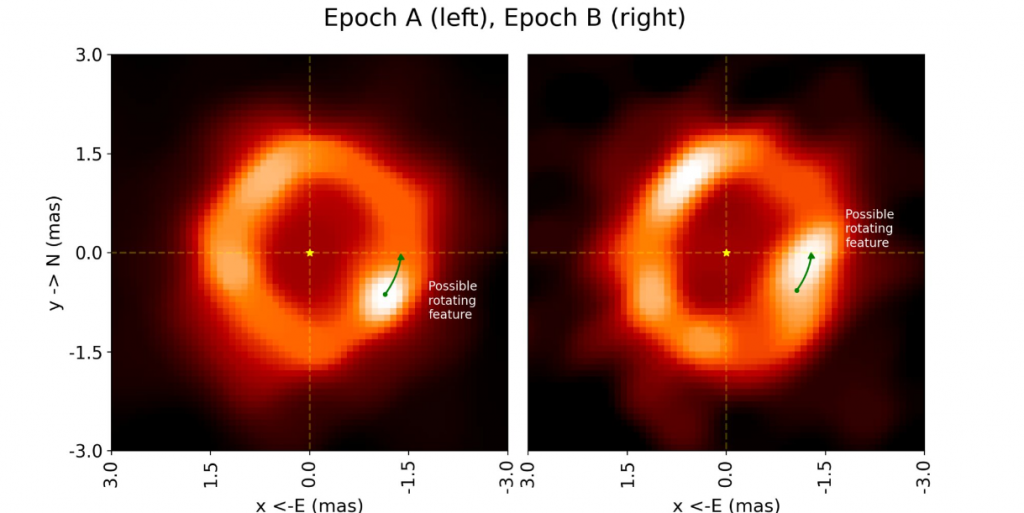The footage shows moving structures in the disk around a young massive star called V1295 Aquilae.
To obtain the necessary permitability, the scientists used long-baseline optical interferometry. It works by combining light from several telescopes located at a certain distance from each other.
In particular, the authors worked at the CenterCenter for High Angular Resolution Astronomy Array (CHARA), which is the largest optical and infrared interferometer in the world. The CHARA array consists of six meter telescopes arranged in a Y shape, providing maximum resolving power equivalent to one telescope with a diameter of 331 meters.
 Two images of the disk's interiorplanet formations taken one month apart. The images reveal unexpected moving structures in the disk around a young massive star called V1295 Aquilae and confirm the mysterious internal radiation reported in previous studies. Credit: Michigan Astronomy
Two images of the disk's interiorplanet formations taken one month apart. The images reveal unexpected moving structures in the disk around a young massive star called V1295 Aquilae and confirm the mysterious internal radiation reported in previous studies. Credit: Michigan Astronomy
Previous models of internal disk emissionssuggested that the “cavity” between where the dusty disk ends and the star wasn’t that dark. Scientists already know that this cavity contains a transparent, dust-free gas that does not produce light in the infrared range.
Dust in the disk observed by the authorsresearch, glows in infrared light because it is heated by the star. At a certain temperature, the heat is too great for the dust to withstand and it breaks down. Therefore, theoretically, scientists should not see any radiation from the middle. The fact that light from the center is still visible raises the question of what creates that “opacity,” astronomers conclude.
</ p>Cover photo: